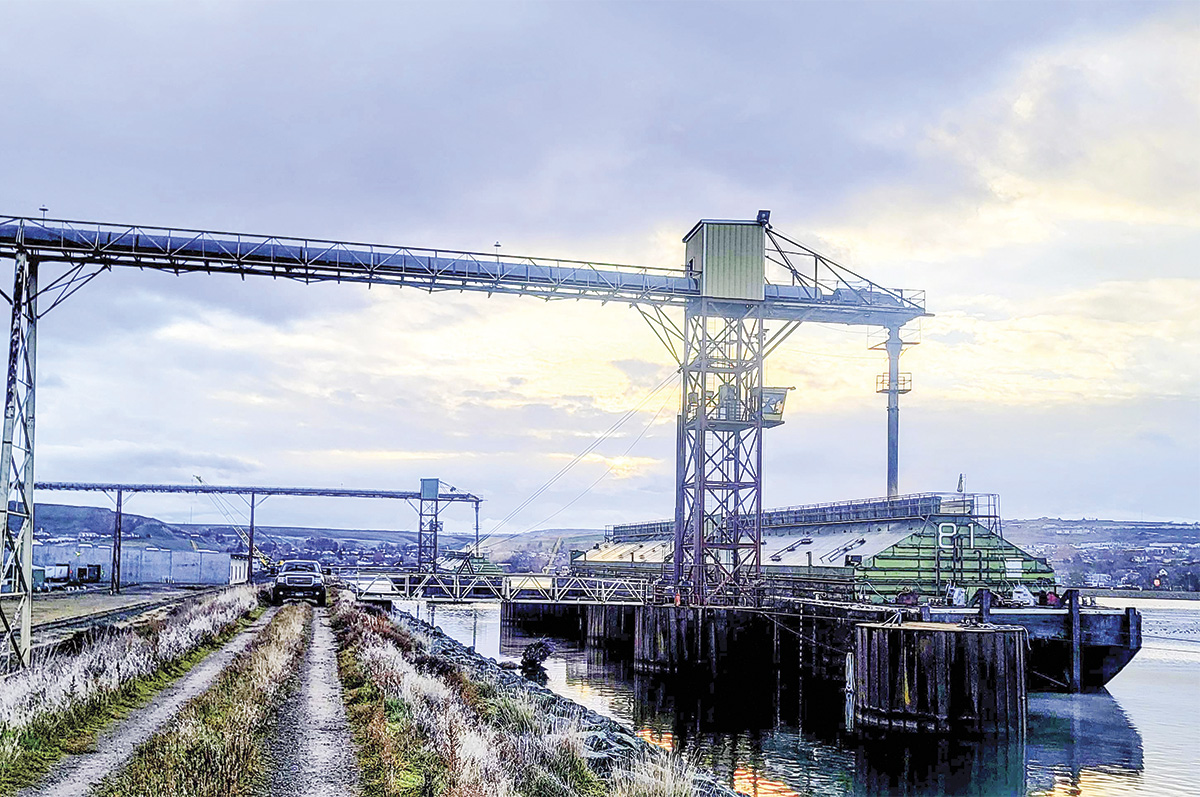The conversation concerning the breaching of the dams on the Columbia-Snake River System has intensified in recent months and has only become more political. Ag Proud – Idaho’s Cassidy Woolsey recently spoke with Scott Corbitt to learn more about the Port of Lewiston, its benefits to the state of Idaho and what impact the removal of the dams would have on agriculture.
Can you give us a brief history of the Port of Lewiston?
CORBITT: The Port of Lewiston was established in 1958 by a vote of the residents of Nez Perce County. The arrival of slack water coinciding with construction of the Lower Snake River Dams (LSRDs) allowed the port to become a multimodal transportation hub with rail, truck and barge traffic originating here.
The port is focused on making north-central Idaho a better place to live and do business. We are the regional leader in broadband, both within Nez Perce County and in the surrounding counties. We are also building a cruise boat facility to create Idaho’s only river cruise destination, and we continue to serve the regional agricultural community as the transportation hub for getting products to market.
How does the port benefit the area’s ag producers and does that benefit extend beyond Nez Perce County?
CORBITT: The Port of Lewiston is home to Lewis Clark Terminal, (LCT) which stores and transports agricultural products for the growers of Idaho, Washington and beyond. This terminal provides a convenient location for the area’s producers to truck their goods shorter distances and gives vital access to Marine Highway M-84, the Snake Columbia River System. LCT accepts products from nearby states such as Montana and Wyoming with some coming from as far away as the Midwest.
The ability to use barging to get ag products to export markets saves growers an estimated 30 cents to 50 cents per bushel in the case of wheat. It is a more reliable transportation system as it gets the products to market on time and without the disruptions that can occur with rail or truck. A single barge can carry the same load as 35 hopper rail cars or 134 semitrucks.
What specific agricultural products are transported both inbound and outbound via the barge system?
CORBITT: Approximately 24 million bushels of wheat are transported out of the port by LCT annually. This equates to roughly 200 barges of wheat per year. Return of container traffic on the Snake Columbia system could lead to the return of barge transport for barley, garbanzos and lentils. Cedar logs are shipped downriver to make fencing on about 50 barges per year. Wood fiber in the form of sawdust and wood chips flows both up and down river for the Clearwater Paper mill in Lewiston.
About 50% of Idaho’s wheat harvest is exported, with nearly all of that wheat being transported through the LSRDs. The value of Idaho’s wheat exports exceeds $300 million annually, and 10% of all U.S. wheat exports are transported on the Columbia Snake River System.

Grain from Lewis Clark Terminal is loaded onto waiting Tidewater barges at the Port of Lewiston. Photo courtesy of Port of Lewiston.
Is the necessary infrastructure in place to accommodate shipping wheat and other agricultural products if barging becomes unavailable?
CORBITT: No. Currently, barging comprises 55% of the transport of wheat for farmers in the region sending their products to the export market. Removal of the dams would require trucking and rail to make up the difference at an increase in costs of 30 cents to 50 cents per bushel, if capacity even existed. The current lack of both trucks and truck drivers makes it impossible to make up the difference with trucking, and rail would need billions of investment dollars to absorb the needed capacity, with some areas like the Lewis-Clark Valley being geographically limited for expansion of the necessary rail service. Finally, elimination of barging would add approximately 1.25 million tons of CO2 and other harmful emissions per year into the atmosphere, as it would take 113,187 semitrailers carrying 910 bushels of wheat to replace the 103 million bushels shipped on the Snake River via barge annually.
Would the decision to breach the dams also impact other states?
CORBITT: Breaching the LSRDs would have far-reaching impacts throughout many states. The financial burden of these potential impacts has been conservatively estimated at $30 billion to $40 billion dollars. Farmers from 11 states ship products on Marine Highway M-84, and farmers within the Columbia Basin rely on the dams for irrigation to grow apples, corn, potatoes and other crops. The loss of these benefits to agriculture is only one of many concerning issues the region would face if dams are removed.
Could you provide some examples of how Idaho producers would be impacted on an individual level by the loss of the barge system?
CORBITT: I spoke to a wheat farmer from this area a month ago about the dams. I asked him about the difference in transportation costs if he were forced to get his wheat to the West Coast by truck. His first thought was that the increased price of over 50 cents per bushel would put many of the growers into a very difficult position, if not put them out of business. He then changed his mind and said the increased price really didn’t matter. When I pressed him for an explanation, he replied that the loss of barging would prevent all the growers from getting their products to the export market. There simply were not enough trucks or truck drivers to make up the difference. Remember, one barge is equal to 134 semitruck trips. Their businesses would likely not survive.
Is there anything else about the Port of Lewiston or the current litigation you would like producers to be aware of?
CORBITT: I would ask our farmers to get fully informed on the issue and make their voices heard. A great deal of misinformation is present in print and on social media that may either provide a false sense of security about the dams or that tries to advocate for some sort of benefits to breaching. There are great sources for information that can help alleviate confusion such as the websites of the Pacific Northwest Waterways Association or the Idaho Wheat Commission. This is now a political fight, and letting your elected officials know how you feel will have an impact.





.jpg?t=1687979285&width=640)


